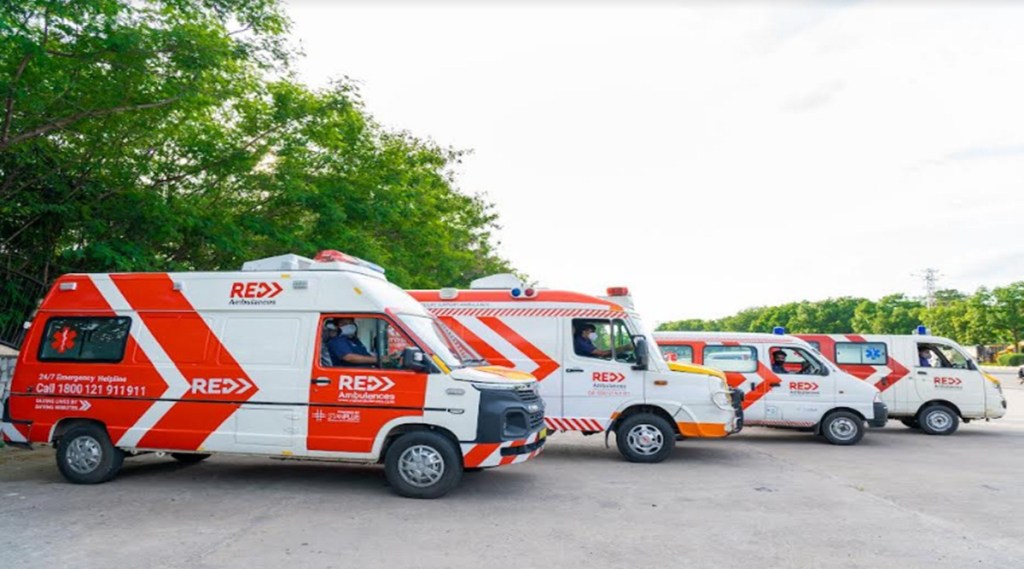Shardul Nautiyal
Emergency response care providers are today focusing on response time, standardization, technology, training and scalability of services to ensure care reaches at the right time to the patient. These organizations are offering a robust tech-based infrastructure that employs location mapping and new-age tracking technologies to reduce the turnaround time for emergency response. They have also forged partnerships with secondary and tertiary care hospitals to cater to their huge patient pool.
The service providers also ensure a comfortable experience for customers or patients by first connecting them with the doctor or executive to avail first aid help as primary guidance. They also do regular quality checks with the hospitals to ensure that the ambulance service being provided is a high-quality service. They regularly check ambulances for compliances, registration certificate, commercial license and paramedics having the right certificate before onboarding.
“In emergency response industry, the main gap that the organization is addressing is to make people aware of whom to call in times of medical emergency and the service they can call to avail the closest possible ambulance provider for help. The organization also focuses on more ambulances per pin code to ensure key metrics like response time. Medulance’s technology platforms are now built to connect customers with ambulance owners directly. Medulance is constantly working in the backend using technology to provide high-quality GPS-enabled ambulances at affordable prices within minutes to the needy,” says Pranav Bajaj, Director, Medulance, an Integrated Emergency
Response Service Provider.
Medulance which started its operations in 2017 has been providing on-time ambulance services with a response time of 11 minutes in Delhi and catering to patients in over 40 cities in India, with a fleet of 5000+ ambulances.
“At Medulance, our key focus is to reduce the response time by integrating technology at the back end to make sure that help reaches at the right time and the right assistance is provided to the patient,” Bajaj added.
Medulance also offers dedicated ambulances to hospitals like Fortis, Columbia Asia, Manipal hospital and other organisations based on a subscription fee-based model. It has partnered with the Delhi government for providing on-demand ambulatory services across the capital.
Bajaj informed, “As of now, we have 50+ corporate clients and a subscriber base of more than 80 lakh. Recently, we also added tele-consultation, medicine delivery, and mental wellness solutions to our bouquet of healthcare services. Medulance is currently handling 500 to 600 calls on a daily basis, from a subscriber base of 80 lakh employees.
Medulance as an organization ensures that all the ambulances on its platform are as per AIS 125 standards under the National Ambulance code for Motors Vehicle act (standards set by the government for the medical transportation services). Medulance works with previous existing players in the market and ensures that these players are aware of the standards, equipment inside the ambulances and fabrication of the ambulances etc. Medulance even provides drivers with training as a part of first aid communication and patient handling.
StanPlus has raised $20Million from marquee investors such as HealthQuad, Kalaari and HealthX. The company is more than five years old which is backed by a fleet of over 3,000 ambulances. StanPlus has partnered with 40 plus hospitals and manages ambulance operations of large hospitals and take care of key components like training, equipment, quality and experience. Seven out of top 10 hospital brands today have outsourced their emergency response system to StanPlus.
“We have three major challenges that we are solving. Number one is standardization number, second is training and trained personnel and third is then making sure that this model is scalable. Let’s say that there is a neighbor of yours that falls down and breaks his hip and cannot be transported in personal transport. In such cases of emergency, the first call goes to the family, then to the nearby doctor and then to the hospital and finally to the employer. We are partnering with all the four stakeholders. You will want the ambulance to have the right stretcher, the right wheelchair, the right ability to pick the patient up. We need to inform the patient details to the insurance company. We run through all these steps to build a responsive care system,” according to Prabhdeep Singh, founder & CEO, StanPlus.
“Today almost all the players in the organized emergency care sector are aggregators. Aggregation only makes sense if the underlying quality is good but the underlying quality of the infrastructure is poor and scalability is a problem. The difference between us and everyone else in the organized sector is that we actually operate 200 ambulances under the Red ambulances brand. In fact, we do the highest clinically risky cases on our own ambulances. This is why top hospitals trust us deeply to manage their emergency response system.
“Our patients want two things, come on time and come complete. That means don’t come without the right equipment and without the right people. The way we are standardizing is we are putting our own ambulances and then bringing franchisees onto the platform saying, now this is how you replicate your ambulances. Our RED Ambulance is a standardized, complete product and basis that we encourage other entrepreneurs and other operators to buy new ambulances and design them as per our specifications,” Prabhdeep Singh further explains.
While talking about the operations, he explains, “In India, every hospital runs its own call center and ambulance system. This is not how the US and Europe do it. Big question is why should an ambulance be parked inside a hospital. Shouldn’t it be parked outside where the patient is. With StanPlus, hospitals are able to provide their patient, an ambulance, which is always 8 to 10 minutes away. We respond to emergency phone calls within 6 seconds and the entire emergency system response system for hospitals. This allows hospitals to get closer to their patients, and have a three times increase in their patient inbounds through their Emergency Response (ER).
Currently, StanPlus provides emergency care in Hyderabad, Bangalore, Raipur, Kolkata and Ahmedabad and is expanding to 10 more tier one, tier two and tier three cities this year.









